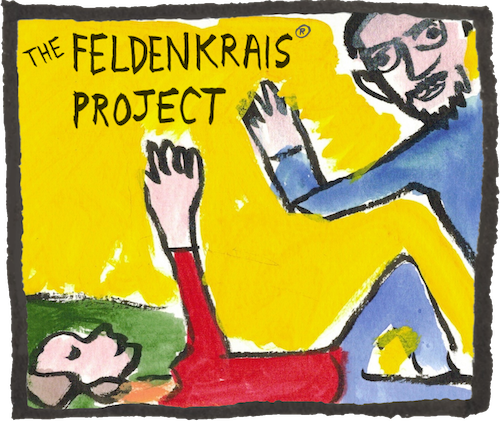Lessons for Better Posture, Walking, and Running
54m
Free Your Torso for Better Posture, Walking, and Running
Mostly side-lying, framed by standing and walking explorations. Using your sternum as a reference point, free your shoulders, hips, chest, and back for better posture and upright movement. Experience how different organizations of your torso affect your ability to move with freedom and confidence. Ends with a 2-minute talk from the after class discussion.
67m
Legs as Free as a Baby’s
Back-lying, one or both knees bent, tilting the knees and letting their weight twist, turn, and lengthen the body. Transferring weight. Broadening and clarifying the function and ease of the pelvis, hip joints, and lumbar. Learning to bend and straighten the legs with the freedom of a baby. Integrating this learning through the whole self, including the chest, shoulders, head, and eyes.
63m
Folding, Foundation, and Feet
Back-lying, knees bent, integrating bending of the ankles through the joints of the legs and into the pelvis and lower back, blending into a classic Feldenkrais lesson which draws the head, elbows, and knees toward each other in different combinations. Improve the folding and unfolding of the body through refining coordination of the flexor muscles, building awareness of the use of the ground (foundation), and lengthening the extensors.
62m
Activating the Arches
Mostly back-lying, knees bent. The “tripod of the foot” lesson, great for improving feet, knees, hips, and more. Learn better awareness and control of the bones and muscles that create the fundamental ground contact structure of the body, and relate it to movements of the ankle, knee (especially the head of the fibula), hip, back, and beyond.
59m
The Buttocks
Lying on the back and front, and various kneeling and standing positions. Exploring and improving the use and awareness of the buttocks in relationship to the pelvis, legs, feet, belly, and spine. Once Feldenkrais fans are ready for this lesson it's a profoundly important one for better posture, walking, and running. See the Comfort & Configuration tab.
57m
Lifting Up and Through
Back-lying, mostly one knee bent, one foot standing. Develop an action of lifting your hip forward in a grounded and distributed way as you learn to draw clear support from the earth up and through you. Great for stability, strength, and confidence in walking, and all upright movement. Framed by experiments in standing and walking.
65m
Connecting Arms and Legs, Hinges at Feet and Knees
Side-lying, integrating movements of the arms, shoulders, head, neck, spine, and hips. Learning to sense and hinge bodyweight in relation to the ground, and between the knees and feet. Great for adding grace and ease to how we twist, turn, and walk.
60m
Your Navigational Pelvis
Back-lying, knees bent. A unique take on the classic Feldenkrais pelvic clock lesson. Learn how the interaction of the feet with the ground relates to the pelvis moving in all directions. Includes movements designed to integrate the spine, head, and eyes, all toward grounding and organizing the whole self for better walking and an easier upright life.
60m
Breathing from Head to Heels
Various positions, about half back-lying. Experiments with the breath mechanism, learning how it relates to the head, spine, and pelvis, and integrates into the length of the heels for standing. Uses paradoxical breathing and "see-saw" breath games.
67m
The Anti-Gravity Lesson
Back-lying, often knees bent. Some modified side-lying and brief front-lying. We can’t beat gravity, so let’s get organized to oppose it effortlessly with bones instead of muscles. Pushing and pulling movements from the feet, moving you up and down your mat, are throughly explored, as the horizontal floor substitutes for the plumb line of gravity.
